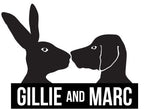Sculptures At Bondi Beach Are Pushing For A Sea Change
Can art incite change? Brynn Davies looks at the artists sending a message to the public with their sculptures ahead of Sculptures By The Sea.
Sculptures By The Sea is celebrating its 20th anniversary as the largest free public sculpture exhibition in the world, and with 103 artists from 17 countries offering the bold, the beautiful and the bizarre on the stunning coastal path between Bondi and Coogee beaches, it’s easy to see why 500,000 are expected to attend. But art is not just a thing of beauty – it’s a powerful way of communicating a message about society, the environment, politics; a mirror in which we see ourselves and our society reflected in a different light. We spoke to some of this years’ featured artists about their works and the way they hope to shape the world.
fair dinkum offshore processing
bronek kozka
I wanted to create a ‘facility’: cold, cruel and utilitarian. My photographic practice involves making sets for my cast to perform in; that was the idea here.
It was made in response to how successive Australian governments on both sides of the fence have decided to treat some of the most at risk and vulnerable people on the planet. From the lies and deceptions with ‘children overboard’, through to the establishment of ‘camps’ in other jurisdictions to the manipulation of immigration laws and zones, their behaviour and the fact we let them get away with is shameful.
My sculpture Fair Dinkum Offshore Processing is a simple floating structure, a facility, cold and austere. It’s made from galvanised steel, aluminium and razor wire. For security it has two mains power, independent, high power LED lights — and its most important feature: no gate. Once you’re in, it’s very hard to get out! Five figures stand rusting (corten steel) behind the fence.
weave the reef, love the reef
marion gaemers
We were using beach and urban rubbish to depict the reef in all its beauty and colours and included in this a bleached section showing that all this rubbish is not good for the reef.
This isn’t a new idea. I have been part of GhostNet Australia doing workshops in north Queensland communities where we were looking at ways the beach rubbish of nets and ropes could be used. Initially this rubbish was being burnt on the beaches and in the communities (also a problem) so they were looking at ways to add value to this beach waste.
Hopefully [viewers] think about all the plastic they consume in their life. Consider a product before they buy it. And reuse their own waste to make something for themselves. Finally, pick up any piece of rubbish on the ground and dispose of it wisely.
buried rhino (aka shandu)
gillie & marc schattner
We’ve chosen to have Buried Rhino in a playful setting where people can interact with it while also showing that they’re currently sinking, and if people don’t act now they will be buried forever.
We all love to play in the sun and being buried in the sand is fun, so we created a larger-than-life sculpture in an interactive setting for all to enjoy. This artwork is also a poignant juxtaposition about this dire, heartbreaking situation.
Rhinos are critically endangered due to dangerously high levels of poaching. Tragically, poaching numbers have been on the rise with last year being one of the worst years in history. In fact, there are currently only three Northern White rhinos left in the world.
This is the world’s biggest rhino sculpture. It’s an incredible five metres high and spans four metres wide so obviously a lot of thought has gone into the design and transportation and installation.
We also asked all our Facebook fans to help us name him and he now has the name Shandu, which means ‘change’.
child (coral)
alessandra rossi
This work explores the process of coral bleaching and discolouration, and the parallels this draws with our society’s attachment to technology. The work is digitally fabricated using 3D printing technology in coloured transparent acrylic material.
Due to the transparency, at a distance the child figure appears to be a part of the environment in which she is placed. However, due to her being constructed from an unnatural material that is technologically produced, this is an illusion. As people get closer, they can see that the edges of the figure are not smooth; the many individual layers create a pixelated effect. This is symbolic of technology in our society; a concept that appears to be cohesive, however it is actually causing disconnection and distancing people emotionally.


